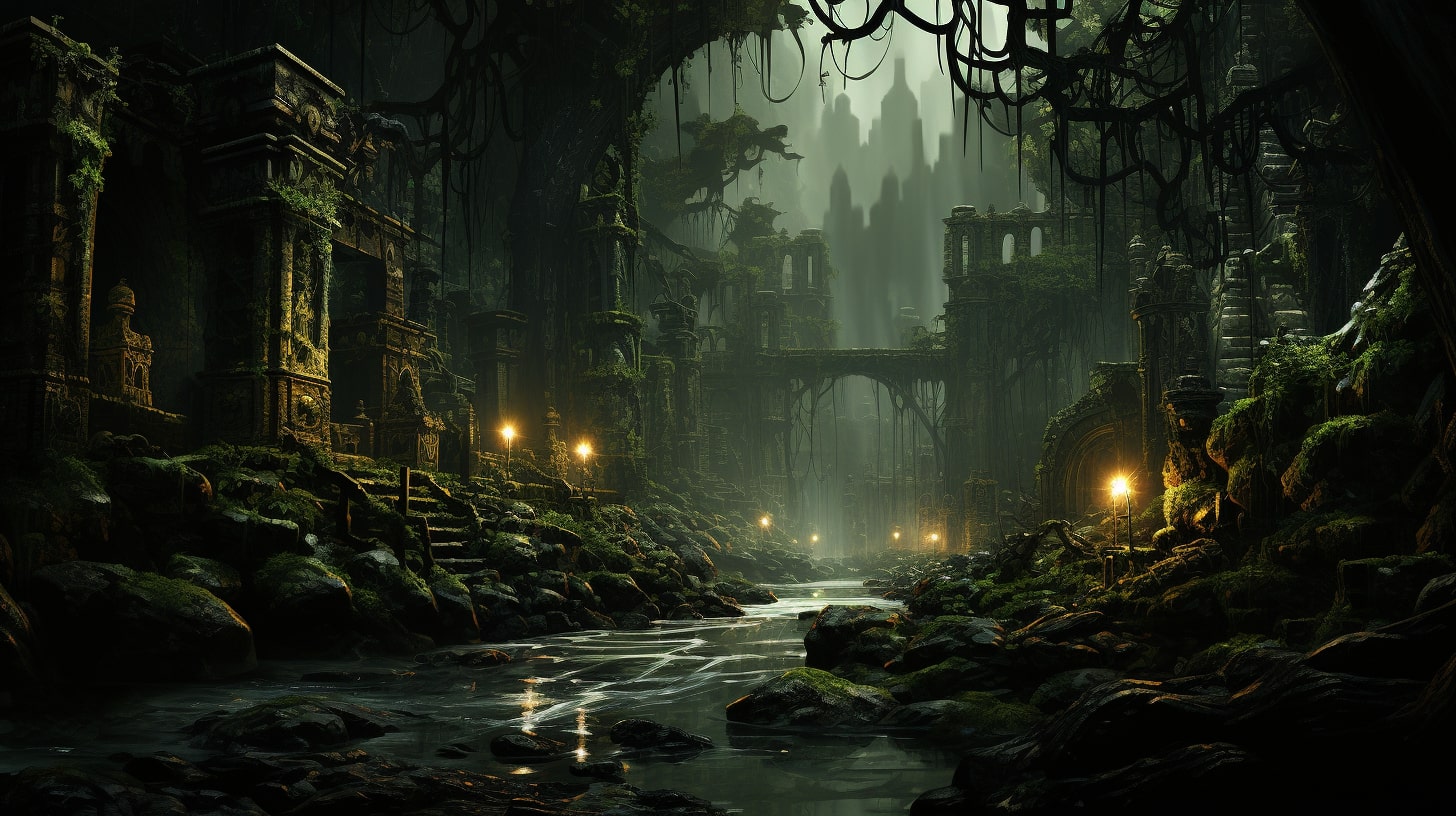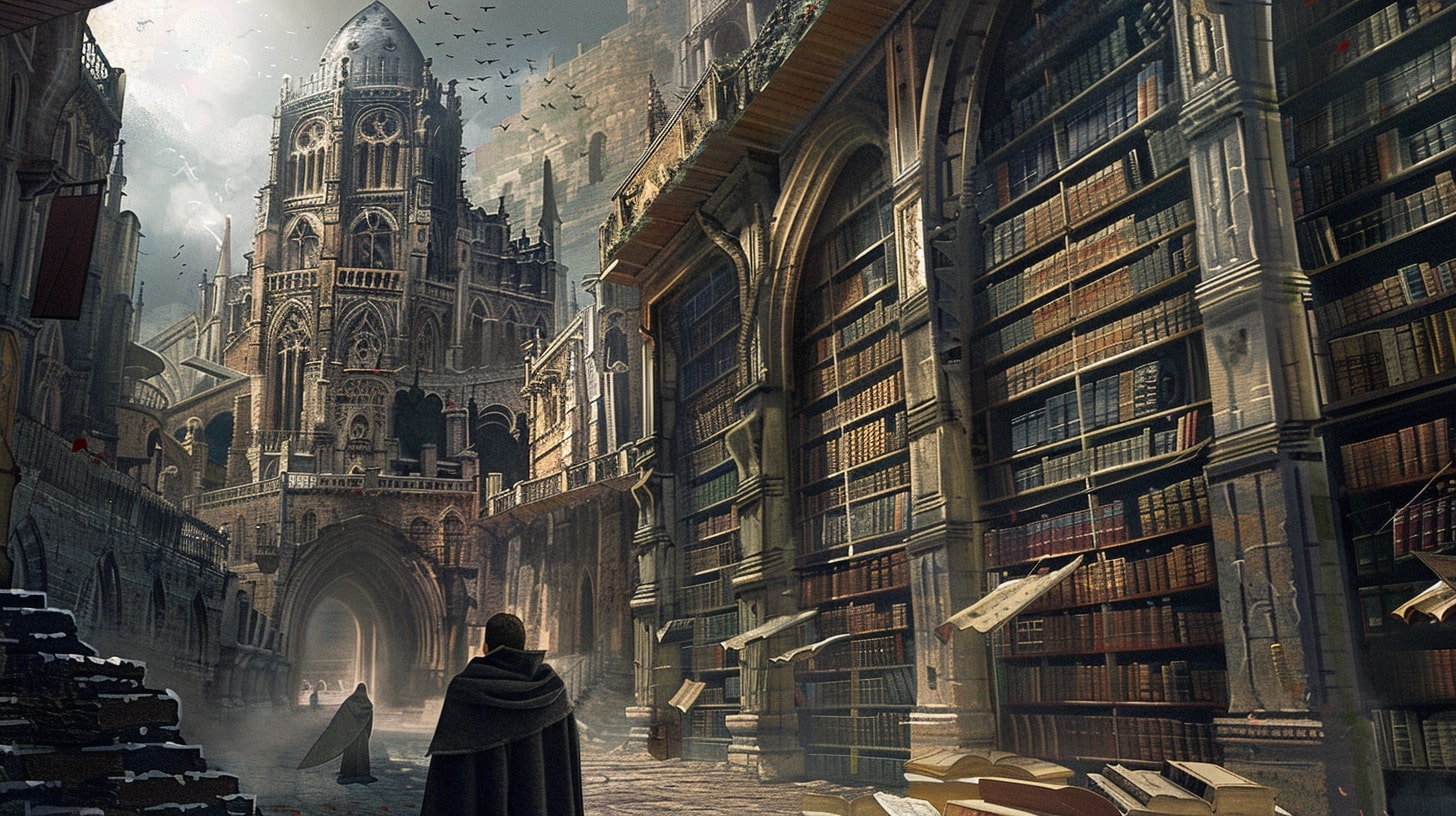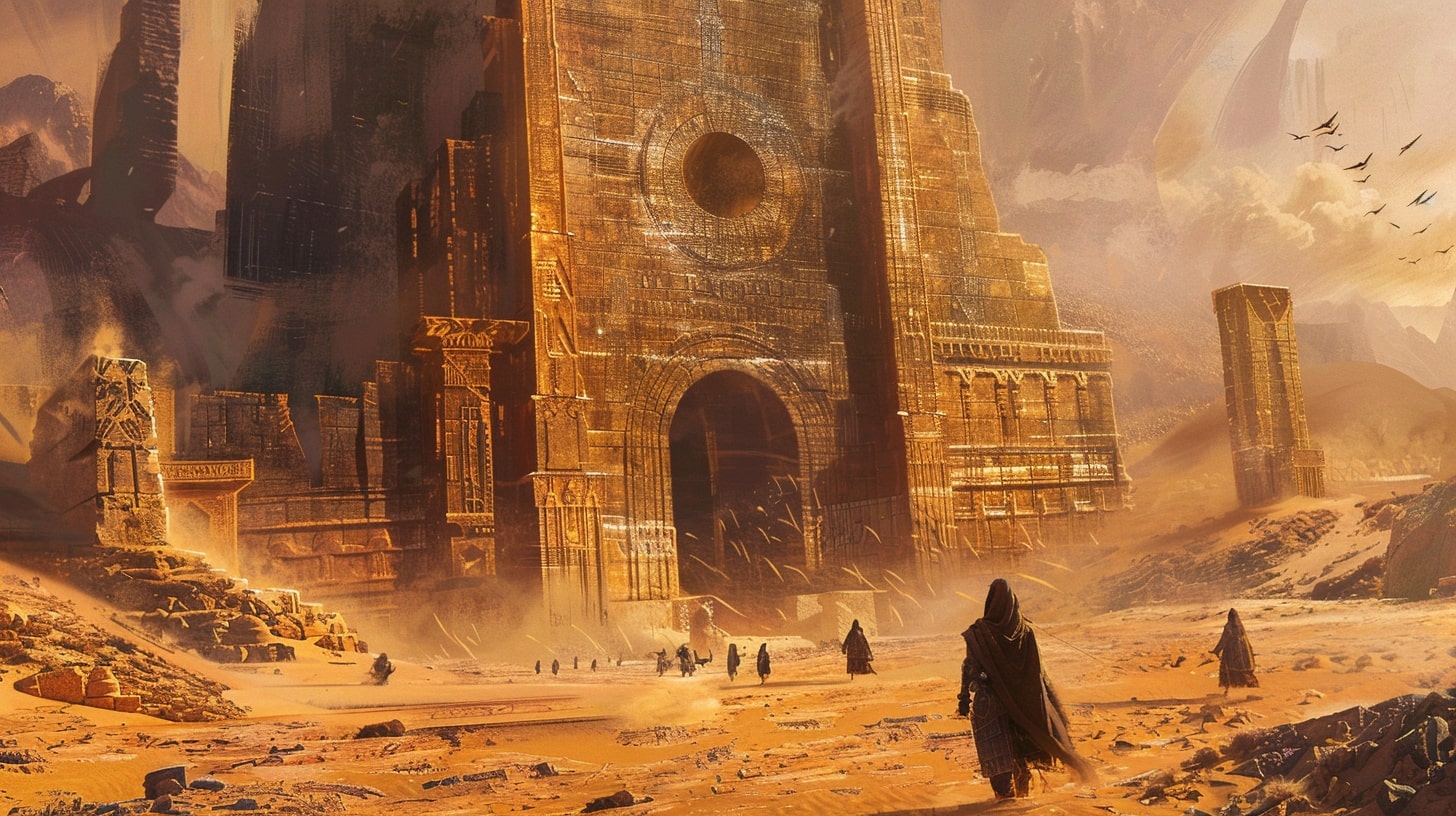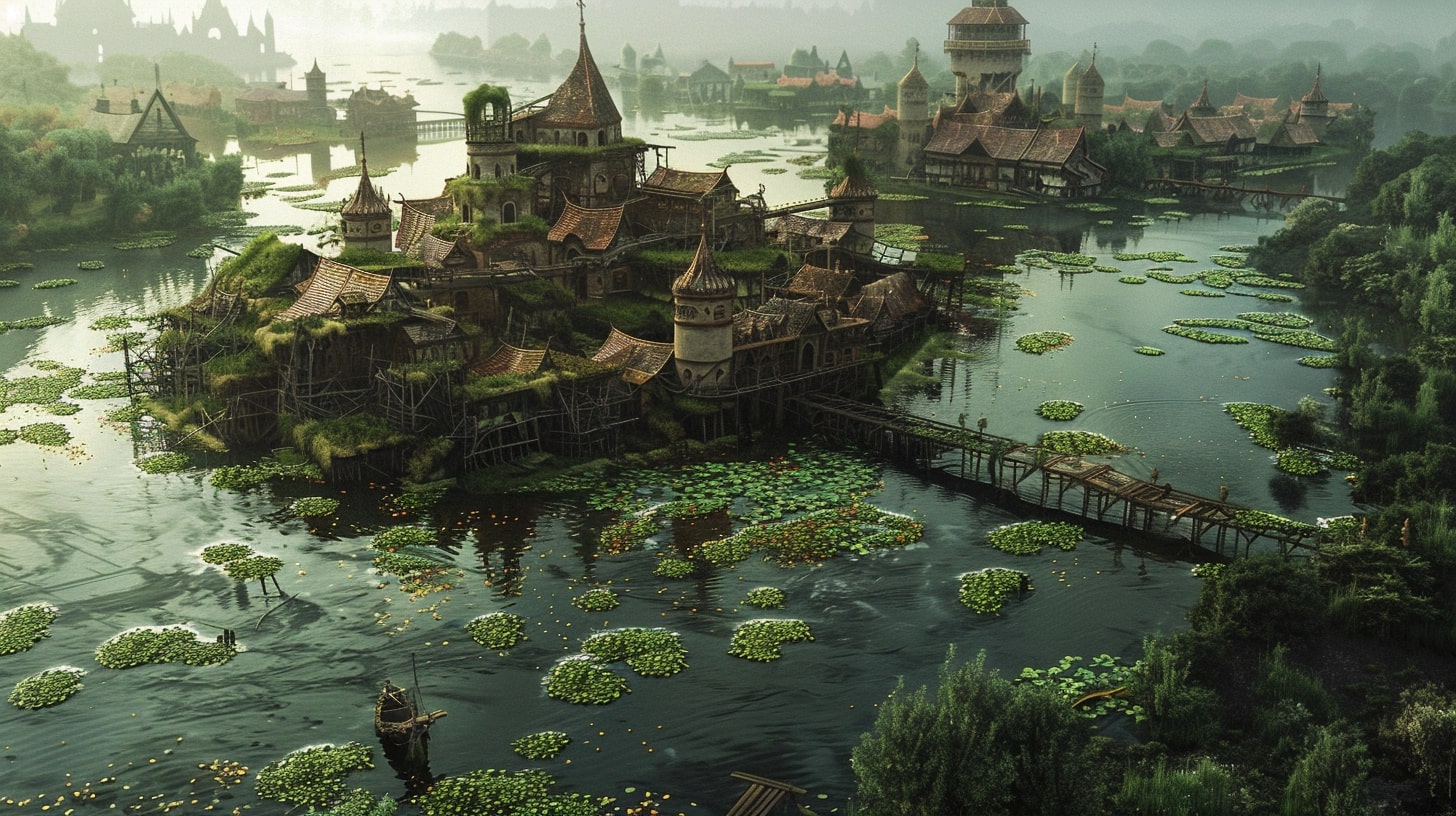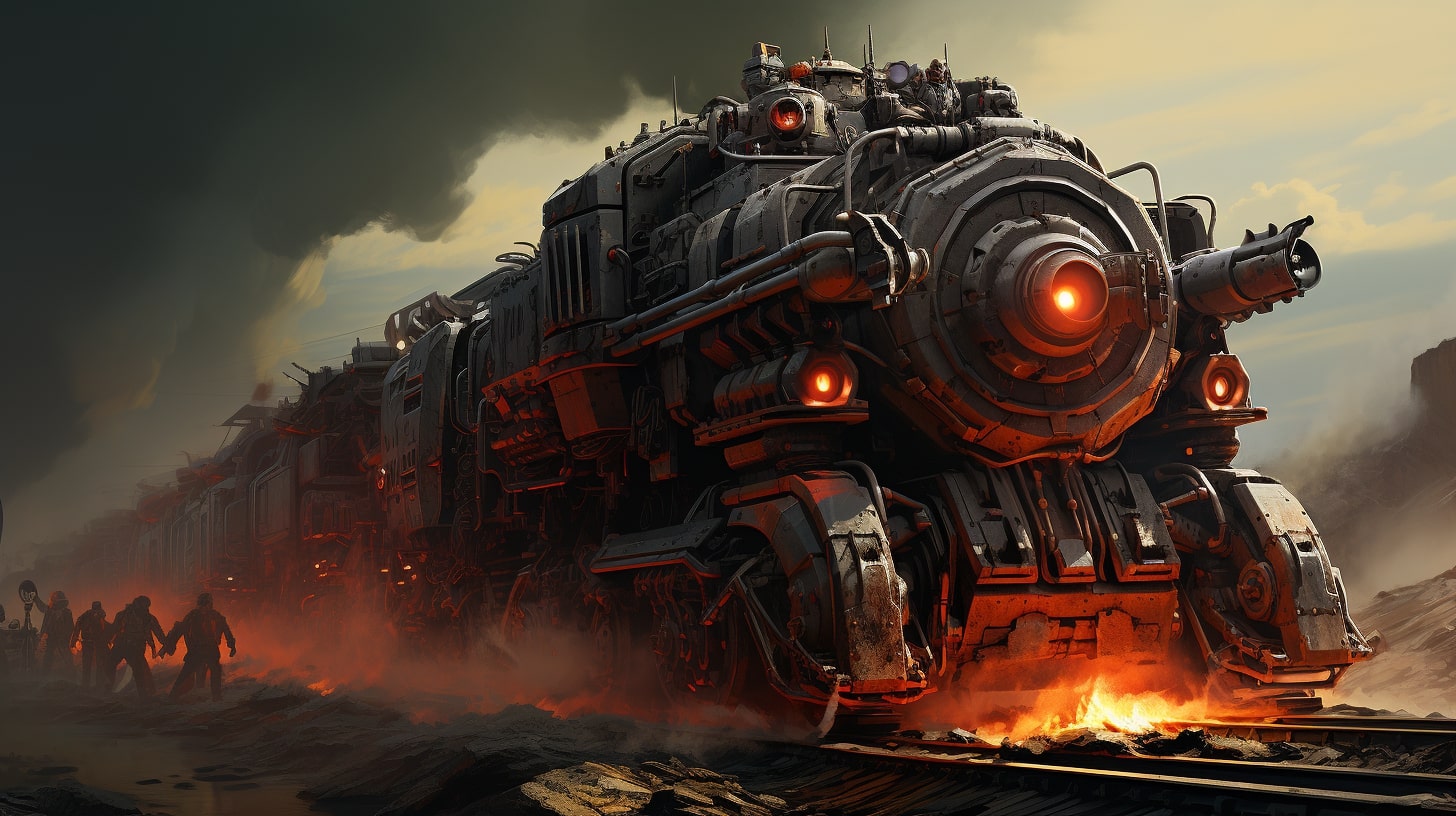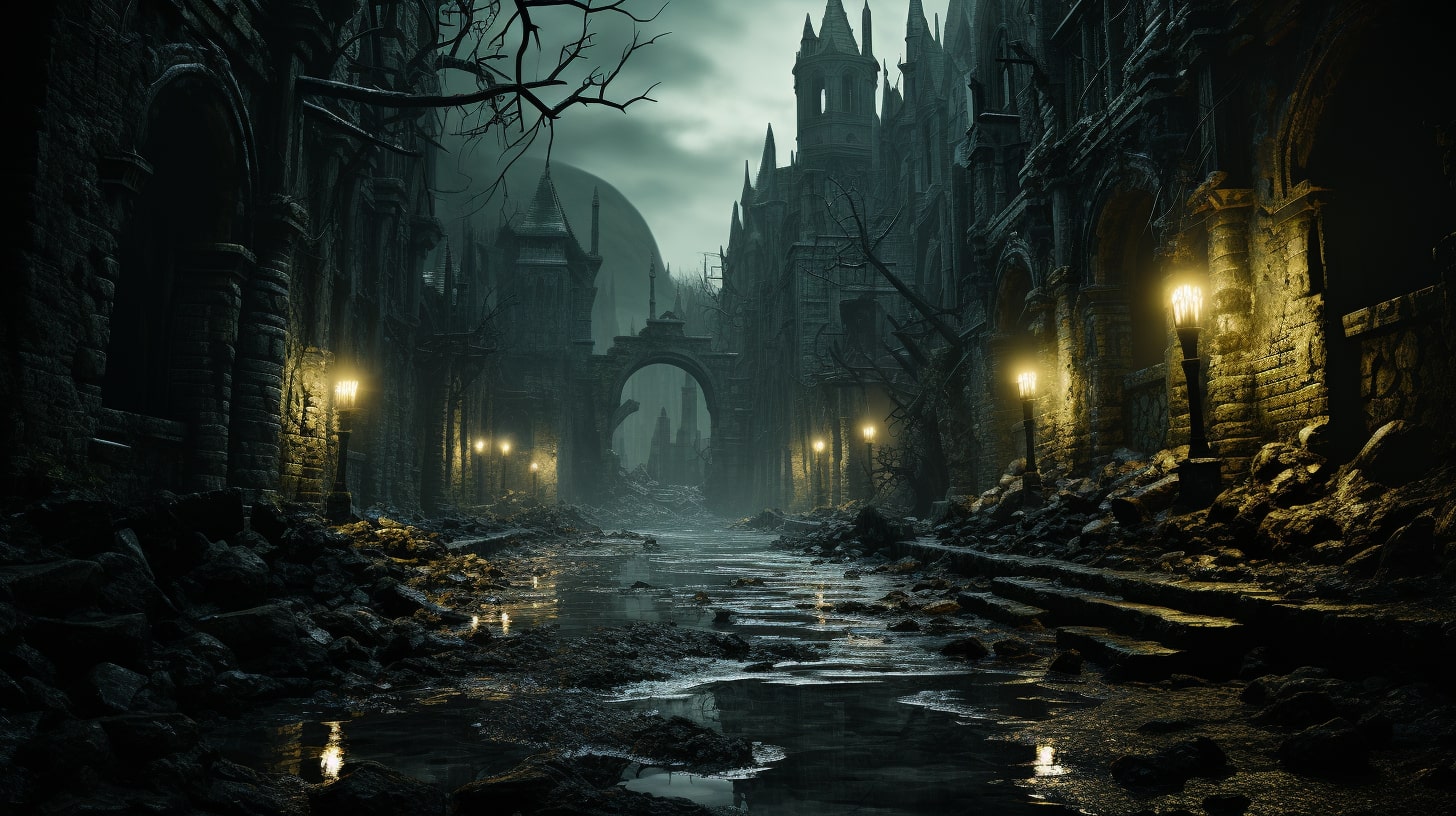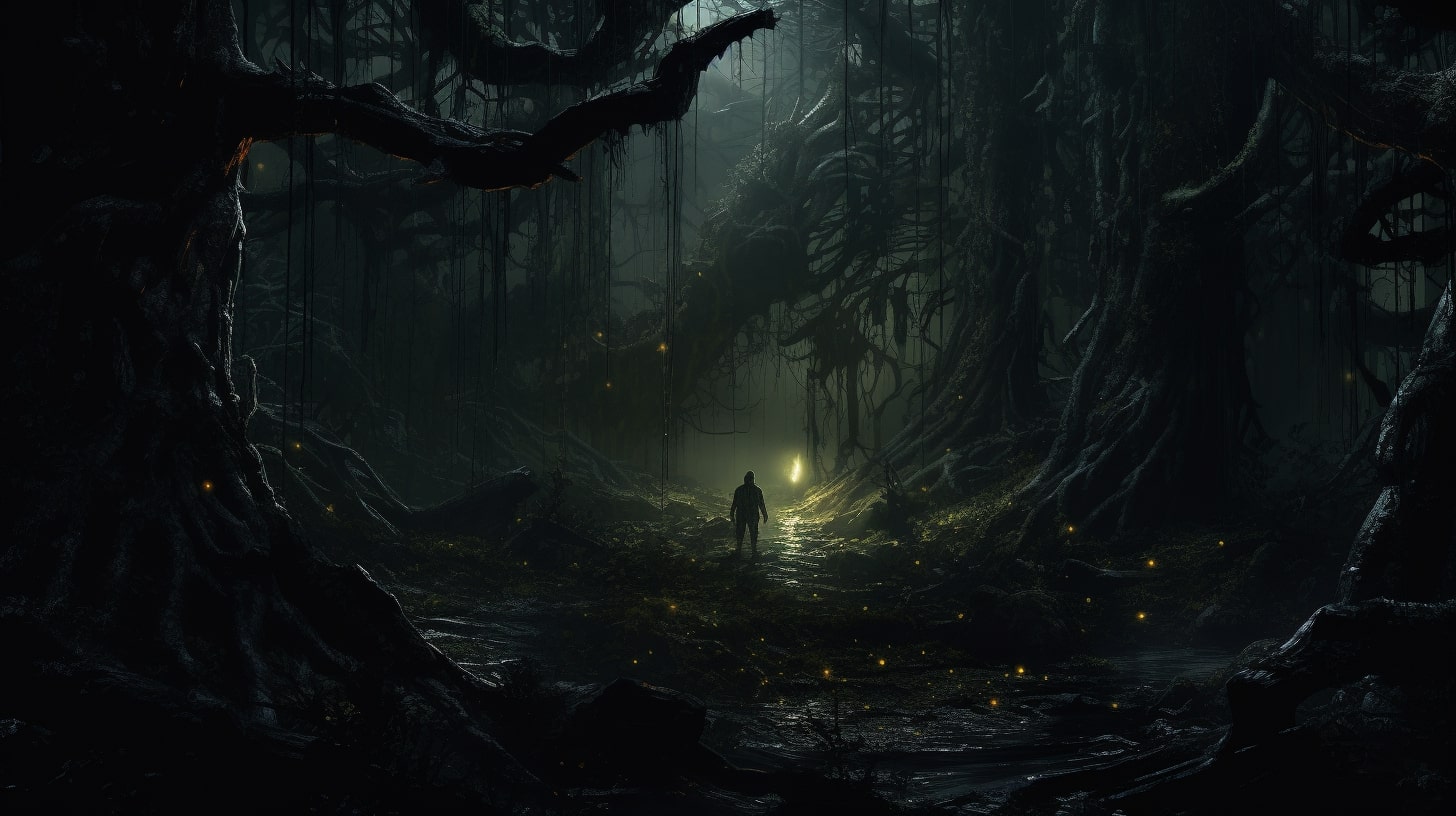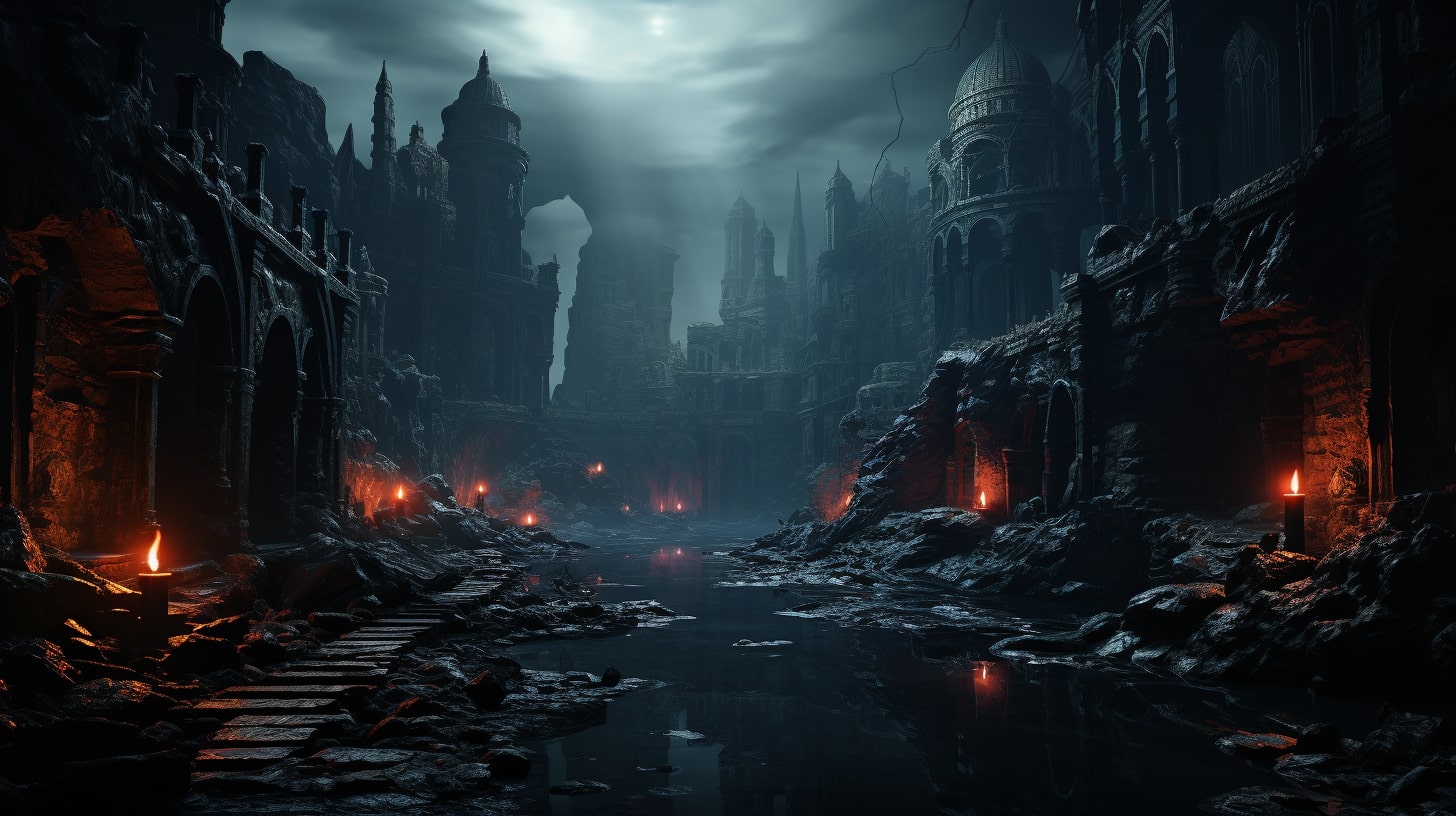Worldbuilding: Creating Imaginary Realms
Welcome to the exciting world of worldbuilding, where authors have the power to create entire imaginary realms from scratch. Whether you’re venturing into the realms of epic fantasy or exploring the depths of science fiction, worldbuilding is an essential aspect of crafting a rich and immersive story.
In this section, we will delve into the importance of worldbuilding in fiction writing and understand the purpose of a worldbuilding checklist.
The Importance of Worldbuilding in Fiction Writing
Worldbuilding serves as the foundation upon which your story unfolds. It allows you to create a believable and cohesive universe that captivates readers and transports them to a different reality.
By intricately designing the elements of your world, such as its geography, cultures, magic systems, and history, you breathe life into your story and make it come alive.
A well-developed world not only enhances the reading experience but also adds depth and realism to your characters and their journeys. It provides a playground for your imagination to roam free and allows you to explore themes, ideologies, and conflicts unique to your world.
Through worldbuilding, you have the power to create a universe that resonates with readers long after they have turned the final page.
Understanding the Purpose of a Worldbuilding Checklist
To ensure that your worldbuilding is comprehensive and cohesive, it can be immensely helpful to have a worldbuilding checklist at your disposal. This checklist acts as a guide, prompting you to consider various aspects of your world and ensuring that no crucial elements are overlooked. It helps you organize your thoughts and ideas, ensuring that each component of your world is carefully crafted and interconnected.
A worldbuilding checklist covers a wide range of topics, including geography, climate, cultures, magic systems, and more. It serves as a reference point, allowing you to brainstorm ideas, flesh out details, and maintain consistency throughout your world.
By following a worldbuilding checklist, you can create a well-rounded and immersive world that feels vibrant and alive to your readers. It helps you stay organized and focused, guiding you through the intricate process of crafting a fictional realm that captures the hearts and imaginations of your audience.
This is the checklist that I use to construct worlds on Odd Wonderful, Myth Dawn, and more.
Now that we understand the importance of worldbuilding in fiction writing and the purpose of a worldbuilding checklist, let’s dive deeper into the process of creating a solid foundation for your imaginary realm.

Creating a Solid Foundation
When it comes to worldbuilding, establishing a solid foundation is crucial to the success of your fictional realm. This involves defining the genre and setting of your world, as well as establishing the rules that govern it.
Defining the Genre and Setting
To start, it’s important to clearly define the genre in which your story takes place. Whether it’s epic fantasy, dystopian science fiction, or historical fiction with a twist, understanding the genre will help shape the elements of your world and guide your creative decisions.
Next, consider the setting of your world. Is it a sprawling medieval kingdom, a futuristic city on another planet, or a parallel universe that closely resembles our own? The setting not only provides a backdrop for your story but also influences the culture, technology, and overall atmosphere of your world.
By establishing a strong genre and setting, you provide a framework upon which to build your world and create a cohesive narrative. This clarity will help you make informed decisions about the various elements that will shape your story and captivate your readers.
Establishing the Rules of the World
Every fictional world operates according to its own set of rules and logic. These rules define the boundaries within which characters and events can exist. It’s important to establish these rules early on to ensure consistency throughout your story.
Consider the laws of physics, magic systems, and any other supernatural or fantastical elements that exist in your world. How do they work? What are their limitations? By defining these rules, you ensure that your world remains internally consistent and believable.
Additionally, consider the cultural norms, social hierarchies, and political systems that shape your world. These factors influence how characters interact with one another and the challenges they face.
By establishing the rules of your world, you create a framework that guides your storytelling and allows readers to immerse themselves fully. This consistency will enhance the overall reading experience and make your world feel more tangible and real.
As you embark on your worldbuilding journey, keep in mind that these are just the first steps in a complex process. Take the time to delve deeper into each aspect and consider how they intertwine with one another. For more inspiration and guidance, check out our articles on worldbuilding ideas and worldbuilding tips. With a solid foundation in place, you’ll be well on your way to creating a rich and immersive world for your readers to explore.

Developing the Physical Aspects
In the realm of worldbuilding, it is crucial to pay attention to the physical aspects of your imaginary world. This includes creating a detailed geography and map as well as considering the climate and weather patterns within your world.
Geography and Map Creation
To bring your world to life, start by envisioning its geography. Consider the land formations, such as mountains, valleys, rivers, and oceans. Think about the placement of different regions, cities, and landmarks. Creating a map can be an invaluable tool to visualize and navigate your world.
When designing your map, employ a combination of creativity and realism. Ensure that the geography is logically consistent, with features that make sense in relation to one another. This will contribute to the overall believability of your world. For inspiration and guidance on creating captivating geographies, check out our article on worldbuilding geography.
Climate and Weather
Another important aspect of worldbuilding is the consideration of climate and weather. The climate of your world will heavily influence its ecosystems, natural resources, and the lives of its inhabitants.
Think about the distribution of temperature and precipitation across your world. Consider the impact of factors such as latitude, altitude, and proximity to bodies of water. Remember to account for seasonal variations and weather patterns that may affect your world’s regions differently.
By incorporating diverse climates and weather conditions, you can add depth and realism to your world. This will not only contribute to the immersive experience for your readers but also influence the cultures, societies, and even the plot of your story. For more insights and ideas on worldbuilding climate, visit our article on worldbuilding climate.
As you develop the physical aspects of your world, take your time to ensure consistency and coherence. Remember that the physical elements are interconnected and influence other aspects of worldbuilding, including society, culture, and even the behavior of your characters. By paying attention to these details, you can create a vibrant and immersive world that captures the imagination of your readers.

Constructing Societies and Cultures
To create a rich and immersive fictional world, it’s essential to construct believable societies and develop unique cultural aspects. This not only adds depth to your world but also enhances the overall storytelling experience for your readers.
Creating Believable Societies
When constructing societies within your fictional world, it’s important to consider various elements that shape their structure and dynamics. These elements include social hierarchies, governing systems, economic systems, and cultural norms. By addressing these aspects, you can create societies that feel authentic and resonate with your readers.
To develop believable societies, ask yourself questions such as:
- What is the social structure like? Are there distinct classes or castes?
- How is power distributed within the society? Is it centralized or decentralized?
- What are the prevailing beliefs and values? How do they influence daily life?
- Are there any specific rituals or traditions that play a significant role?
- How does the society interact with other societies in the world?
By delving into these aspects, you can create societies that feel fully realized and contribute to the overall worldbuilding. For more ideas and inspiration on creating societies within your world, check out our article on worldbuilding societies.
Developing Unique Cultural Aspects
Culture is a fundamental part of any society and plays a crucial role in shaping the behaviors, customs, and traditions of its inhabitants. When developing cultures within your world, it’s important to consider various cultural aspects that make them distinct and memorable.
Some key elements to consider when developing cultural aspects include:
- Language: Create unique languages or dialects that reflect the cultural diversity within your world. Consider how language shapes communication and influences social interactions.
- Arts and Entertainment: Explore the forms of art, music, dance, and storytelling that exist within each culture. These forms of expression can serve as a window into their values and beliefs.
- Cuisine: Develop distinct culinary traditions that reflect the available resources and cultural practices. Food can provide insights into a culture’s history, geography, and social customs.
- Clothing and Fashion: Design unique styles of clothing that reflect the climate, geography, and societal norms of each culture. Consider how clothing choices can signify social status or cultural affiliations.
By developing these unique cultural aspects, you can give your fictional world a sense of authenticity and immerse readers in a rich and diverse tapestry of societies. For more guidance and tips on worldbuilding cultures, check out our article on worldbuilding cultures.
Constructing societies and developing cultural aspects are crucial steps in the worldbuilding process. By creating believable societies and infusing them with unique cultural elements, you can bring your fictional world to life and captivate your readers with a truly immersive experience.
Crafting the Magic System
In the realm of worldbuilding, crafting a compelling magic system is a key aspect for many fantasy authors. A well-developed magic system adds depth and intrigue to your fictional world. In this section, we will explore two important components of crafting a magic system: defining the principles of magic and integrating magic into the world.
Defining the Principles of Magic
Before integrating magic into your world, it’s essential to establish the principles that govern how magic works. This includes defining the source of magic, its limitations, and the rules that shape its usage. By doing so, you create a framework that ensures consistency and believability in your magical elements.
Consider the following aspects when defining the principles of magic:
Source of Magic: Determine where magic originates from in your world. It could be derived from ancient mystical forces, inherited through bloodlines, or granted by divine entities.
Types of Magic: Identify the different types or branches of magic that exist within your world. This could include elemental magic, healing magic, illusion magic, or any other form you envision.
Limitations and Costs: Establish the limitations and costs associated with using magic. This could involve physical or mental exertion, the need for specific items or incantations, or even potential risks and consequences.
Training and Skill: Consider how individuals acquire and develop their magical abilities. Are there schools or mentors that teach magic? Do certain individuals possess an innate talent, or is it something that can be learned by anyone?
By defining the principles of magic, you lay the foundation for a coherent and immersive magical system that aligns with the rules of your world.
Integrating Magic into the World
Once you have established the principles of magic, the next step is to seamlessly integrate it into your world. This involves considering how magic influences various aspects of society, culture, and daily life.
Here are some ways to integrate magic into your world:
Societal Impact: Explore how magic affects the structure of societies within your world. Determine whether magic users hold positions of power or face discrimination. Consider the impact of magic on social hierarchies, politics, and even warfare.
Cultural Significance: Develop unique cultural aspects related to magic. This could involve rituals, customs, or beliefs specific to magic users or magical events. These cultural elements can add depth and richness to your world.
Economic and Practical Applications: Consider how magic is utilized in practical ways. Does it play a role in agriculture, transportation, or craftsmanship? How does it impact the economy and trade within your world?
Conflict and Challenges: Explore conflicts that arise from the use or misuse of magic. This could involve rival magical factions, the struggle for power, or ethical dilemmas faced by magic users.
Integrating magic into the world allows your readers to fully immerse themselves in the fantastical elements of your story. It adds layers of complexity and helps to create a vibrant and believable fictional world.
Remember, the magic system you create should be consistent with the overall worldbuilding elements. By carefully defining the principles of magic and thoughtfully integrating it into your world, you will captivate readers with a magical system that feels authentic and engaging.
For more inspiration and guidance on worldbuilding, check out our articles on worldbuilding inspiration and worldbuilding techniques.
Building Characters within the World
In the vast realm of worldbuilding, building characters that are seamlessly integrated into the world you create is essential for an immersive reading experience. By focusing on character backgrounds and origins as well as aligning characters with the world’s values and beliefs, you can bring depth and authenticity to your fictional universe.
Character Backgrounds and Origins
When crafting characters for your world, it’s important to consider their backgrounds and origins. This includes their personal histories, upbringing, and experiences that have shaped them into who they are within the story. These elements not only influence their personality traits, but also their perspectives, motivations, and goals.
To develop well-rounded characters, ask yourself questions such as:
- What events or circumstances have influenced their upbringing?
- Are they from a particular social class, race, or culture that impacts their worldview?
- What past experiences have shaped their beliefs and values?
- How do their backgrounds contribute to their strengths, weaknesses, and skills?
By understanding your characters’ backgrounds and origins, you can create multi-dimensional individuals that feel realistic and relatable within the context of your world.
Aligning Characters with the World’s Values and Beliefs
For characters to feel truly integrated into your world, it’s crucial to align them with the values and beliefs that exist within the fictional society or culture they inhabit. This means considering the prevailing ideologies, customs, and traditions of the world you have built.
Ask yourself these questions when aligning characters with the world’s values and beliefs:
- What are the dominant cultural norms and expectations?
- Are there any social or religious structures that influence behavior and belief systems?
- How do characters navigate and interact with the world’s power dynamics and politics?
By ensuring that your characters reflect and respond to the world’s values and beliefs, you create a cohesive narrative that resonates with readers. This alignment helps to establish a sense of authenticity and allows readers to understand the characters’ motivations and choices within the context of the world you have created.
Remember, worldbuilding is a complex and intricate process that requires attention to detail and consistency. By focusing on character backgrounds and origins, as well as aligning characters with the world’s values and beliefs, you can bring your fictional world to life and captivate readers with a rich tapestry of characters and their experiences.
For more inspiration and guidance on worldbuilding for writers, check out our article on worldbuilding for writers.
Weaving a Captivating Narrative
To truly bring your world to life, it’s essential to craft a compelling storyline that engages your readers from beginning to end. Building upon the foundation of your world, you can create a narrative that immerses your audience in the wonders and intricacies of your imaginary realm. Here are two key aspects to consider when weaving a captivating narrative: crafting a compelling storyline and ensuring consistency and continuity.
Crafting a Compelling Storyline
A captivating storyline is the backbone of any successful book. It is the thread that connects your world’s characters, events, and conflicts together, keeping readers hooked from chapter to chapter. When crafting your storyline, consider the following elements:
Character-driven: Develop well-rounded, relatable characters who drive the plot forward. Their goals, motivations, and conflicts should intertwine with the world you’ve created, creating a sense of depth and authenticity.
Conflict and tension: Introduce conflicts, obstacles, and challenges that your characters must overcome. Whether it’s a personal struggle or an external threat to the world, conflict and tension keep readers invested in the story.
Pacing: Maintain a balance between slower, introspective moments and fast-paced action to keep readers engaged. Varying the pace can create a sense of anticipation and build suspense.
Themes and messages: Explore universal themes and messages that resonate with your readers. Themes of love, loss, friendship, or power can add depth and emotional resonance to your narrative.
Remember, a compelling storyline is only as good as its execution. Pay attention to the structure, pacing, and development of your plot to create a narrative that captivates your readers and keeps them turning the pages.
Ensuring Consistency and Continuity
Consistency and continuity are crucial elements in maintaining the believability of your world. Readers appreciate a well-constructed and internally logical universe. Here are a few tips to ensure consistency and continuity:
Worldbuilding bible: Create a comprehensive worldbuilding guide or bible that documents the various aspects of your world, including its history, geography, cultures, and rules. This reference document will help you maintain consistency throughout your storytelling process.
Timeline and events: Develop a timeline of significant events in your world’s history. This will help you keep track of past events and their impact on the present narrative. Ensuring that cause and effect are consistent will enhance the realism of your world.
Character development: Pay attention to the growth and development of your characters. Ensure that their actions, decisions, and relationships remain consistent throughout the story. Characters should evolve naturally, but their core traits and values should remain intact.
Rules and limitations: Consistently apply the rules and limitations you’ve established in your world. Whether it’s the principles of magic or the societal norms of different cultures, adhering to these rules will create a sense of coherence and make your world feel more authentic.
By crafting a compelling storyline and ensuring consistency and continuity, you can create a narrative that transports readers into the rich tapestry of your world. Consider the unique characteristics of your world and the motivations of your characters as you craft an engaging tale that will leave readers eagerly anticipating what comes next.
Adding Depth and Detail
To truly immerse your readers in the world you’ve created, it’s essential to add depth and detail to your worldbuilding. This helps to make your imaginary realm feel more realistic and engaging. Two important aspects to consider when adding depth and detail to your worldbuilding are creating custom languages and incorporating mythology and legends.
Creating Custom Languages
One way to add authenticity and uniqueness to your world is by developing custom languages for your fictional cultures. Creating a custom language not only adds depth to your worldbuilding, but it also provides an opportunity for your readers to connect with the distinct cultures you’ve created.
When creating a custom language, consider the following:
Phonetics and Syntax: Determine the sounds and structure of the language. Think about how words are pronounced and how sentences are structured.
Vocabulary: Develop a vocabulary that reflects the culture’s values, environment, and history. Consider creating words for important concepts, objects, and cultural practices.
Grammar and Writing System: Establish the grammar rules and writing system for the language. Decide if the language is written using an alphabet, logograms, or another form of script.
Consistency: Ensure consistency in your language throughout your writing. Keep track of grammar rules, vocabulary, and pronunciation to maintain continuity.
By investing time and effort into creating a custom language, you can enhance the authenticity and richness of your world. For more inspiration and tips, check out our article on worldbuilding languages.
Incorporating Mythology and Legends
Mythology and legends play a vital role in shaping the beliefs, traditions, and history of a world. They add depth and mystery to your worldbuilding, providing a sense of wonder and enchantment. Incorporating mythology and legends allows you to explore the cultural and religious aspects of your fictional societies.
Consider the following when incorporating mythology and legends into your world:
Creation Myths: Develop creation myths that explain how your world came into existence. These stories can shed light on the origin of important elements, such as the gods, races, or magical phenomena.
Heroic Legends: Create legendary tales of heroic deeds and epic adventures. These stories can feature legendary characters, quests, and battles that have shaped the history and culture of your world.
Folklore and Legends: Populate your world with local legends, folklore, and superstitions that are specific to different regions or races. These stories can provide insights into the beliefs, values, and fears of the inhabitants.
Deities and Pantheons: Develop a pantheon of gods and goddesses that are revered in your world. Explore their domains, relationships, and influence on the mortal realm.
Incorporating mythology and legends into your worldbuilding adds depth and meaning to the cultures and societies you’ve created. It allows readers to delve into the rich history and belief systems of your world. For more guidance on worldbuilding, check out our article on worldbuilding basics.
By creating custom languages and incorporating mythology and legends, you can elevate your worldbuilding to new heights. These elements add layers of complexity and immersion, making your fictional world come alive for your readers. So grab your pen and let your imagination run wild as you shape the languages and mythical tales that will captivate your audience.
Fine-tuning and Polishing
Now that you have gone through the process of worldbuilding and have created the various elements that make up your imaginary realm, it’s time to review and refine your worldbuilding elements to ensure they are cohesive and compelling. This stage is crucial for polishing your world and making it truly shine. Here are two essential steps to fine-tune your worldbuilding:
Reviewing and Refining the Worldbuilding Elements
Take a step back and evaluate each aspect of your worldbuilding checklist. Review your genre and setting, rules of the world, geography and map creation, climate and weather, societies and cultures, magic system, characters, storyline, depth and detail, and any other elements you have developed. Pay attention to the consistency, logic, and believability of each element.
Ask yourself:
- Does the worldbuilding align with the genre and setting you have established?
- Are the rules of the world clear and well-defined?
- Does the geography and map align with the climate and weather patterns you have created?
- Are the societies and cultures believable and distinct?
- Does the magic system integrate seamlessly into the world?
- Do the characters reflect the values and beliefs of the world?
- Is the storyline compelling and consistent?
- Have you added enough depth and detail to make the world come alive?
As you review each element, make any necessary adjustments to ensure coherence and enhance the overall quality of your world. Seek feedback from trusted beta readers or fellow writers to gain fresh perspectives and identify areas that may need further refinement. Remember, the goal is to create a world that captivates and immerses your readers.
Seeking Feedback and Iterating
Once you have reviewed and refined your worldbuilding elements, it’s time to seek feedback from others. Share your work with a group of beta readers, writing communities, or fellow authors who specialize in worldbuilding. Their insights and perspectives can provide valuable feedback that will help you further improve your world.
Consider the following when seeking feedback:
- Ask specific questions related to the areas you want feedback on. For example, you could ask about the believability of your societies and cultures, or if the magic system feels integrated into the world.
- Be open to constructive criticism and different viewpoints. Remember, feedback is meant to help you grow as a writer and strengthen your world.
- Take notes of the feedback and identify patterns or common suggestions. This will help you identify areas that may require further iteration.
- Iterate and refine your worldbuilding elements based on the feedback you receive. Make sure to maintain consistency and coherence throughout the process.
By seeking feedback and iterating on your worldbuilding elements, you can elevate your imaginary realm to new heights. Remember, worldbuilding is an ongoing process, and even the most intricate worlds can benefit from continuous refinement. Embrace the journey of fine-tuning and polishing your world, and soon you’ll have a rich and immersive setting that will captivate readers.




